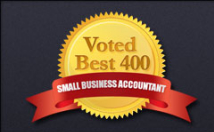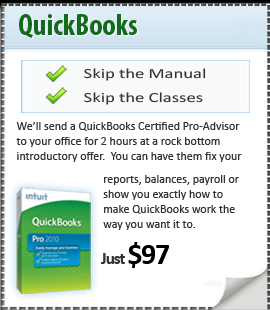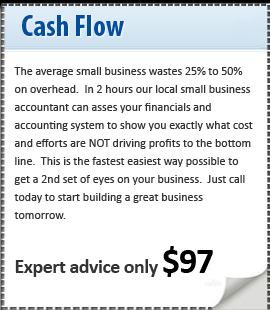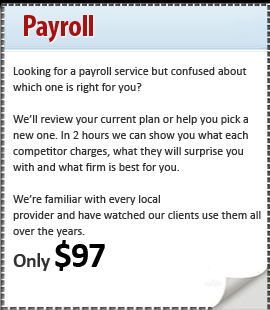"Business Finance - How To Write A Business Plan "
|
The following pages provide a suggested outline of the material that should be included in your business plan. Your final plan may vary according to your needs or because of the individual requirements of your lender. What Are the Benefits? Every business can benefit from the preparation of a carefully written plan. There are two main purposes for writing that plan:
Business Plan Outline The Cover Sheet Serves as the title page of your business plan. It should contain the following:
Statement
of Purpose This is the thesis statement and includes business plan objectives. Use the key words (who, what, where, when, why, how, and how much) to briefly tell about the following:
Table of Contents A page listing the major topics and references. The business - Covers the details of your business. Include information about your industry in general, and your business in particular. Address the following:
List future products or services you plan to provide.
Marketing Covers the details of your marketing plan. Include information about the total market with emphasis on your target market. Identify your customers and tell about the means to make your product or service avail- able to them. Target market - Identify characteristics of your customers. Tell how you arrived at your results. Back up information with demographics questionnaires and surveys. Project size of your market. Competition - Evaluate indirect and direct competition. Show how you can compete. Evaluate competition in terms of location market and business history. Methods of distribution - Tell about the manner in which products and services will be made available to the customer. Back up decisions with statistical reports rate sheets etc. Advertising - How will your advertising be tailored to your target market? Include rate sheets promotional material and time lines for your advertising campaign. Pricing - Pricing will be determined as a result of market research and costing your product or service. Tell how you arrived at your pricing structure and back it up with materials from your research. Product design - Answer key questions regarding product design and packaging. Include graphics and proprietary rights information. Timing of market entry - Tell when you plan to enter the market and how you arrived at your decision. Location - If your choice of location is related to target market cover it in this section of your business plan. (See location in the business section of this outline.) Industry trends - Give current trends project how the market may change and what you plan to do to keep up. Financial Documents These are the records used to show past, current and projected finances. The following are the major documents you will want to include in your business plan. The work is easier if these are done in the order presented. Summary of financial needs - This is an outline indicating why you are applying for a loan and how much you need. Sources and uses of funds statement - It will be necessary for you to tell how you intend to disperse the loan funds. Back up your statement with supporting data. Cash flow statement (budget) - This document projects what your business plan means in terms of dollars. It shows cash inflow and outflow over a period of time and is used for internal planning. Cash flow statements show both how much and when cash must flow in and out of your business. Three-year income projection A pro forma income statement showing your projections for your company for the next three years. Use the pro forma cash flow statement for the first year's figures and project the next according to economic and industry trends. Break-even analysis - The break-even point is when a company's expenses exactly match the sales or service volume. It can be expressed in total dollars or revenue exactly offset by total expenses or total units of production (cost of which exactly equals the income derived by their sales). This analysis can be done either mathematically or graphically. Note: The following are actual performance statements reflecting the activity of your business in the past. If you are a new business owner your financial section will end here and you will add a personal financial history. If you are an established business you will include the actual performance statements that follow. Balance sheet - Shows the condition of the business as of a fixed date. It is a picture of your firm's financial condition at a particular moment and will show you whether your financial position is strong or weak. It is usually done at the close of an accounting period and contains assets and liabilities. The information needed is usually the same. If you have completed the rest of the financial section you should be able to transfer all the needed information to this document. Supporting Documents These are the records that back up the statements and decisions made in the three main parts of your business plan. Those most commonly included are as follows: Personal resumes - Should be limited to one page and include work history educational background professional affiliations and honors and special skills. Personal financial statement - A statement of personal assets and liabilities. For a new business owner this will be part of your financial section. Credit reports - Business and personal from suppliers or wholesalers credit bureaus and banks. Copies of leases - All agreements currently in force between your company and a leasing agency. Letters of reference - Letters recommending you as being a reputable and reliable businessperson worthy of being considered a good risk. (Include both business and personal references.) Contracts - Include all business contracts both completed and currently in force. Legal documents - All legal papers pertaining to your legal structure proprietary rights insurance titles etc. Miscellaneous documents - All other documents that have been referred to but are not included in the main body of the plan (e.g. location plans demographics advertising plan etc.). Putting Your Plan Together When you are finished: Your business plan should look professional, but the lender needs to know that it was done by you. A business plan will be the best indicator he or she has to judge your potential for success. It should be no more than 30 to 40 pages long. Include only the supporting documents that will be of immediate interest to your potential lender. Keep the others in your own copy where they will be available on short notice. Have copies of your plan bound at your local print shop, or with a blue, black or brown cover purchased from the stationery store. Make copies for yourself and each lender you wish to approach. Do not give out too many copies at once, and keep track of each copy. If your loan is refused, be sure to retrieve your business plan. For a more detailed explanation of each section of the business plan outline, see SBA's publication, How to Write a Business Plan, which includes step-by-step directions and sample sections of actual business plans. Also available from the SBA is a VHS videotape and workbook, The Business Plan: Your Roadmap for Success. APPENDIX B: INFORMATION RESOURCES U.S. Small Business Administration (SBA) The SBA offers an extensive selection of information on most business management topics, from how to start a business to exporting your products. This information is listed in "The Small Business Directory". For a free copy contact your nearest SBA office. SBA has offices throughout the country. Consult the U.S. Government section in your telephone directory for the office nearest you. SBA offers a number of programs and services, including training and educational programs, counseling services, financial programs and contract assistance. Ask about - Service Corps of Retired Executives (SCORE), a national organization sponsored by SBA of over 13,000 volunteer business executives who provide free counseling, workshops and seminars to prospective and existing small business people. Small Business Development Centers (SBDCs), sponsored by the SBA in partnership with state and local governments, the educational community and the private sector. They provide assistance, counseling and training to prospective and existing business people. Small Business Institutes (SBIs), organized through SBA on more than 500 college campuses nationwide. The institutes provide counseling by students and faculty to small business clients. For more information about SBA business development programs and services call the SBA Small Business Answer Desk at 1-800-827-5722). Other U.S. Government Resources Many publications on business management and other related topics are available from the Government Printing Office (GPO). GPO bookstores are located in 24 major cities and are listed in the Yellow Pages under the "bookstore" heading. You can request a "Subject Bibliography" by writing to Government Printing Office, Superintendent of Documents, Washington, DC 20402Ä9328. Many federal agencies offer publications of interest to small businesses. There is a nominal fee for some, but most are free. Below is a selected list of government agencies that provide publications and other services targeted to small businesses. To get their publications, contact the regional offices listed in the telephone directory or write to the addresses below: Consumer Information Center (CIC), P.O. Box 100 Pueblo, CO 81002 The CIC offers a consumer information catalog of federal publications. - Consumer Product Safety Commission (CPSC) Publications Request Washington, DC 20207 The CPSC offers guidelines for product safety requirements. U.S. Department of Agriculture (USDA) 12th Street and Independence Avenue, SW Washington, DC 20250 The USDA offers publications on selling to the USDA. Publications and programs on entrepreneurship are also available through county extension offices nationwide. - U.S. Department of Commerce (DOC) Office of Business Liaison 14th Street and Constitution Avenue, NW Room 5898C Washington, DC 20230 DOC's Business Assistance Center provides listings of business opportunities available in the federal government. This service also will refer businesses to different programs and services in the DOC and other federal agencies. U.S. Department of Health and Human Services (HHS) Public Health Service Alcohol, Drug Abuse and Mental Health Administration 5600 Fishers Lane Rockville, MD 20857 Drug Free Workplace Helpline: 1-800-843-4971. Provides information on Employee Assistance Programs. National Institute for Drug Abuse Hotline: 1-800-662-4357. Provides information on preventing substance abuse in the workplace. The National Clearinghouse for Alcohol and Drug Information: 1-800-729-6686 toll-free. Provides pamphlets and resource materials on substance abuse. U.S. Department of Labor (DOL) Employment Standards Administration 200 Constitution Avenue, NW Washington, DC 20210 The DOL offers publications on compliance with labor laws. U.S. Department of Treasury Internal Revenue Service (IRS) P.O. Box 25866 Richmond, VA 23260 1-800-424-3676 The IRS offers information on tax requirements for small businesses. U.S. Environmental Protection Agency (EPA) Small Business Ombudsman 401 M Street, SW (AÄ149C) Washington, DC 20460 1-800-368-5888 except DC and VA 703-557-1938 in DC and VA The EPA offers more than 100 publications designed to help small businesses understand how they can comply with EPA regulations. U.S. Food and Drug Administration (FDA) FDA Center for Food Safety and Applied Nutrition 200 Charles Street, SW Washington, DC 20402 The FDA offers information on packaging and labeling requirements for food and food-related products. For More Information A librarian can help you locate the specific information you need in reference books. Most libraries have a variety of directories, indexes and encyclopedias that cover many business topics. They also have other resources, such as: Trade association information Ask the librarian to show you a directory of trade associations. Associations provide a valuable network of resources to their members through publications and services such as newsletters, conferences and seminars. - Books Magazine and newspaper articles Business and professional magazines provide information that is more current than that found in books and textbooks. There are a number of indexes to help you find specific articles in periodicals. |
|||
|
|
|||
|
©
Copyright 2000-2007 Santa Fe Business Solutions, LLC. All Rights Reserved.
|
|||
Who We Are
The owner and principal of the company is Richard G. Robinson, CPA. He is licensed in New Mexico since 1995 and originally licensed in Colorado since 1987.
Our Staff
Since we are a virtual office, we utilize the assistance of accountants and bookkeepers who work from home all over the U.S. This is great for you because our burden rate for employees is about 1/2 that of our competitors and that savings is reflected in our rates.
QuickBooks®
If you need QuickBooks® help click the link below to ask us a question by email or just call us at 505-466-2830. Richard enjoys helping clients with QuickBooks® issues and has been a QuickBooks® consultant for many years.





